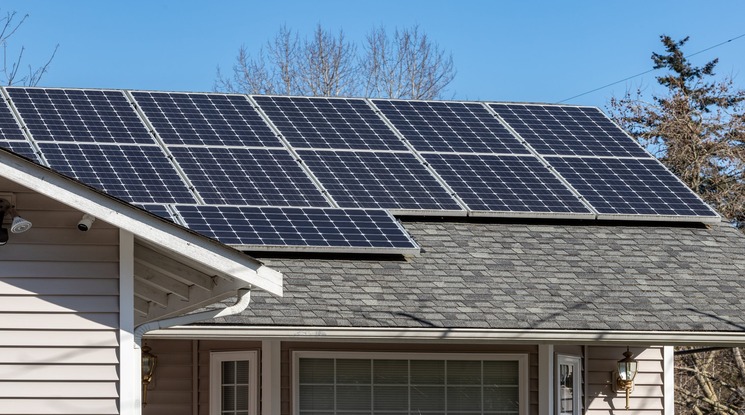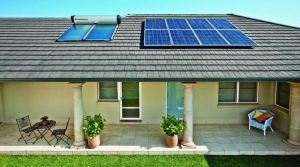Solar energy has come a long way since the first photovoltaic cell was invented in the 19th century. In recent years, it has become a major player in the global energy landscape, providing clean and sustainable power to millions of homes and businesses. The continuous innovation in solar technology has led to remarkable advancements that are shaping the future of energy production. In this blog, we will explore the latest developments in solar panels in Virginia, highlighting how these advancements are making solar power more efficient, affordable, and accessible.
Tandem Solar Cells
Tandem solar cells, also known as multi-junction solar cells, are a groundbreaking advancement in solar technology. These cells stack multiple layers of photovoltaic materials on top of each other, each designed to capture a specific portion of the solar spectrum. This allows for more efficient energy conversion, as different materials can absorb different wavelengths of light. Tandem solar cells have achieved record-breaking efficiencies, surpassing 30%, making them one of the most promising developments in recent years.
Perovskite Solar Cells
Perovskite solar cells have generated significant excitement within the solar industry due to their potential to revolutionize solar panel technology. Perovskite materials are cheaper and easier to manufacture than traditional silicon, and they offer impressive efficiency rates. While commercialization is still underway, perovskite solar cells have the potential to bring down the cost of solar power substantially.
Bifacial Solar Panels
Bifacial solar panels are designed to capture sunlight from both the front and rear sides of the panel, increasing energy production. These panels are particularly effective in environments with reflective surfaces, such as snow or white roofs. By harnessing reflected light, bifacial panels can boost overall energy yield by up to 30%.
Flexible and Lightweight Solar Panels
Advancements in materials science have led to the development of flexible and lightweight solar panels. These panels can be integrated into a wider range of applications, including curved surfaces, clothing, and portable devices. The flexibility and lightness of these panels open up new possibilities for solar power in previously untapped areas.
Transparent Solar Panels
Transparent solar panels, also known as solar windows, are a game-changer for building-integrated photovoltaics. These panels can be incorporated into windows, skylights, and glass facades without obstructing light or visibility. While still in the early stages of development, transparent solar panels hold enormous potential for sustainable architecture and urban planning.
Energy Storage Solutions
Solar energy generation is inherently intermittent due to factors like day-night cycles and weather conditions. The integration of advanced energy storage solutions, such as lithium-ion batteries and flow batteries, has become essential to ensuring a stable and reliable energy supply. These storage systems allow excess energy generated during the day to be stored and used during periods of low sunlight, providing 24/7 access to solar power.
Smart Solar Technologies
The advent of the Internet of Things (IoT) has led to the development of smart solar technologies. These systems use sensors and data analytics to optimize solar energy production and consumption. For example, smart inverters can adjust the orientation of solar panels to maximize sunlight exposure, while smart meters enable real-time monitoring and control of energy usage.
Solar Paint and Coatings
Researchers are exploring the possibility of creating solar-active paints and coatings that can be applied to various surfaces, including roofs, walls, and even roads. These coatings would harness solar energy and convert it into electricity, potentially turning entire buildings and infrastructure into energy generators.
Floating Solar Farms
Floating solar farms, also known as “floatovoltaics,” are gaining popularity as a way to utilize bodies of water for solar energy production. These systems not only generate clean energy but also reduce water evaporation and help maintain water quality in reservoirs.
Hybrid Solar Systems
Hybrid solar systems combine solar panels with other renewable energy sources, such as wind or hydro power, to create more reliable and consistent energy generation. These integrated systems can help meet energy demand even when solar conditions are suboptimal.
Conclusion
The latest advancements in solar energy are transforming the way we generate and use power. From highly efficient tandem solar cells and perovskite materials to innovative applications like transparent solar panels and solar paint, the solar industry is at the forefront of sustainable energy innovation. These developments not only improve the efficiency and affordability of solar companies in virginia but also expand its reach into new and exciting areas, from architecture and infrastructure to wearables and smart cities. As the world continues to grapple with environmental challenges and the need for clean energy solutions, the latest advancements in solar energy offer a ray of hope for a brighter and more sustainable future.




